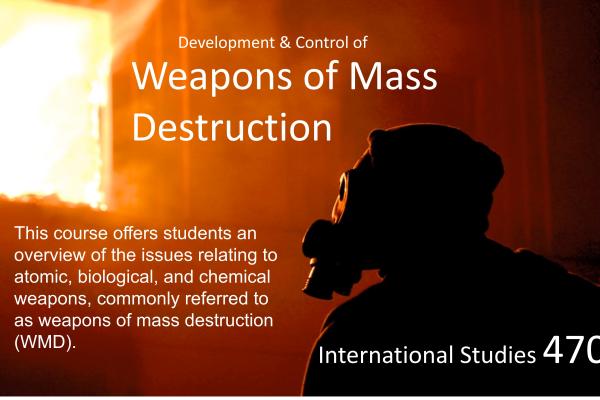Development & Control of Weapons of Mass Destruction

INTERNATIONAL STUDIES 4701 - Weapons
AUTUMN 2022
Dr. Jeffrey Lewis
TR 11:10 AM – 12:30 PM
Room 213, Campbell Hall
Class #: 17806
Credits: 3
This course offers students an overview of the issues relating to nuclear, biological, and chemical weapons, commonly referred to as weapons of mass destruction (WMDs). Since the end of the Cold War, the proliferation of these kinds of weapons has become one of America’s primary security concerns; thus an understanding of the weapons and their capabilities is an essential component of understanding national security more broadly.
We will approach so-called “WMDs” from three angles. First, we will take a historical perspective, exploring the development and use of these weapons in past conflicts. Second, we will examine the scientific foundation of the most significant WMD threats. While not a science class, students must certainly have a basic understanding of the way that these kinds of weapons function in order to assess the threat that they represent. No prior science background on the part of students is assumed, but they must be prepared to learn some basic biology, chemistry, and physics. Finally, the class will deal with these weapons from a security/policy perspective, and we will conclude by exploring the various possible ways of halting the spread of these kinds of weapons.
The following themes will serve to unify our study of these three different types of weapon technologies:
1) The complexity of unconventional weapon technologies
2) The difficulties imposed by these technologies on relatively inexperienced users
3) The perceived risk of these weapons vs. their demonstrated capabilities
Course learning outcomes
By the end of this course, students should successfully be able to:
• Understand the basic function of the chemical, biological, and nuclear weapons that pose the most significant contemporary security risks
• Use their understanding of chemical, biological, and nuclear weapons to understand the limits of these weapons in practice and to develop policy accordingly
• Critically read and interpret primary and secondary sources from different perspectives, synthesize these interpretations in the form of persuasive arguments, and present these arguments as formal analytical writings
